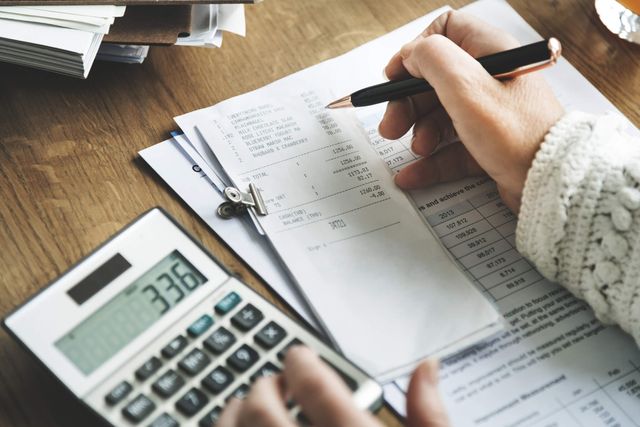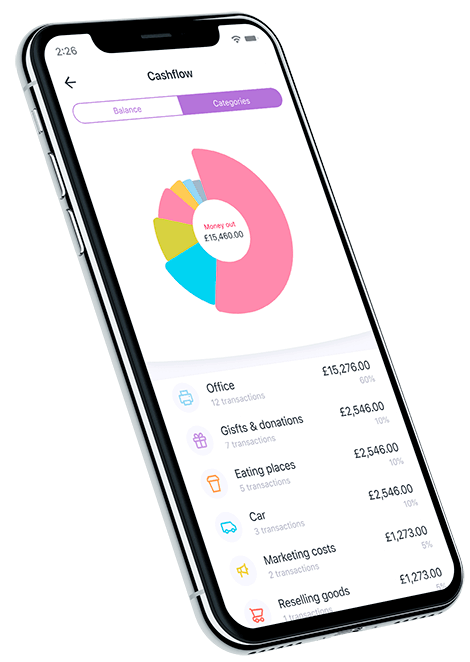How to master Self Assessment

It’s not always clear what you can and can’t do on a tax return. At Amaiz, we aim to make the process of filing Self Assessment much more manageable by preparing you as you go.
Here we take a look at different areas of Self Assessment, how to start getting ready for Making Tax Digital and what to do to ensure you’ve got everything covered for the taxman.
How to register for Self Assessment
If you’re receiving income that is not taxed at source, such as income from a business, property or dividends from a Limited Company, you will have to register for Self Assessment. And that means completing a tax return every year and paying any tax that’s due on this income—most small businesses initially start up as sole traders. If you choose this option, you will have to declare any money your business makes, show HMRC the expenses your business has incurred and declare your profit and loss on a tax return.
Our free guide to registering for Self Assessment has got everything you need to make sure your business is ready for the taxman. Just head over to the gov.uk website using the guide and the following link.
Within 10 days of registering for Self Assessment, you will receive an activation code in the post which you should use to activate your Self Assessment tax return filing service. If you started your business in the current tax year (5 April 2019 onwards), you will have to let HMRC know about your business as soon as possible but 5 October 2020 (the business’s second year of trading) is the latest that you can inform HMRC about your business.
Calculating profits or losses from your business
To calculate the profit from your business, you’ll need to add your income from all your trading activities and deduct your ‘allowable expenses’ from this income. As a sole trader, you can account for your income and expenses using the cash accounting method or the traditional accounting method.
The cash accounting method applies when you account for income when it’s received or when expenses are paid. If you’re a sole trader, you will be able to use the cash basis accounting method unless your turnover (income from doing all your work) is over £150,000 a year or if you have stock for resale, have losses, or want to claim back interest or bank charges of more than £500.
The traditional accrual accounting method is when you account for your income or expenses when they are billed or when the cost was incurred.
For example, if you raised an invoice for a customer on 5 April 2018 but received the payment on 5 May 2018, you would show this income on your 2017-18 tax return if you were using the traditional accounting method. If you were using cash accounting, you would show this on your 2018-19 tax return as this is when you receive the cash for it.
Allowable expenses
Expenses incurred wholly and exclusively for the purposes of conducting your business are known as allowable expenses. You can only claim allowable expenses against your trading income. You cannot claim any personal expenses against your trading income.
Drawing money from your sole trader business
A sole trader and their business are considered one entity; therefore you can take out money from your business bank account as drawings. If you are taking any salary like amounts from your business (regular payments from your business for personal usage), you don't need to declare this on your tax return as an expense. It’s your actual income and expenses incurred for your business that have to be shown on your tax return.
Trading Allowance
Every tax year, you can get an allowance of £1,000 from 6 April 2017, so any income earned up to this amount doesn’t need to be declared on a tax return. You can find more information at this link here.
National Insurance rates for the self-employed
- Class 2: £3 a week (£156 a year) if your taxable profits are above £6,365.
- Class 4: 9% on taxable profits between £8,632 and £50,000 and 2% on profits over £50,000.
Please see the following link for more information.
When is Self Assessment due?
Key Self Assessment deadlines
- 5 October—Register for Self Assessment if you are a sole trader.
- Midnight 31 October—Paper tax returns.
- Midnight 31 January—Submit online tax returns plus any tax owed.
Payments on account
If your tax liability from your previous tax return was more than £1,000, you will be asked to make an advance payment (payment on account) for next year’s tax liability. Read more about payments on account here.
- Midnight 31 January—First payment on account and balancing payment due.
- Midnight 31 July—Second payment on account due.
Read more about Self Assessment deadlines on the gov.uk website: Self Assessment tax returns.
Student loans
If you were previously employed, student loan repayments would have been paid directly to HMRC who would then pass this to the student loans company. However if you have recently started your own business and have a student loan, you will have to declare on your tax returns every year that you have a student loan and make payment directly to the HMRC. This payment will need to be made at the same time as when you make your payment for any tax due on your Self Assessment.
Interest received from an ISA
You don’t need to declare any interest you have received in an ISA. The amount you can put into an ISA this tax year (19/20) is £20,000
Interest received in savings accounts
In April 2016, the government introduced the personal savings allowance. The personal savings allowance allows basic rate taxpayers to earn £1,000 and higher rate taxpayers £500 per year free of income tax on interest. When you complete your tax return, aggregate the total interest you have earnt from all your savings accounts and put the gross amount on your tax return.
Interest earned on children’s savings account is not taxable and doesn’t need to be declared on your tax return.
If you receive interest for a bank account that you have abroad, and you are resident in the UK (generally if you live in the UK for 183 days or more in a year), you will have to declare this on your tax return and pay any income tax in the normal way.
You can read the following guide on the UK government website
If you have already paid tax on that interest abroad, you may be able to claim double taxation relief from the HMRC.
Capital Gains tax
If you’ve sold some shares in a company and made money on selling the shares, then the gain may be subject to tax. For example, you purchase some shares in a stock market listed company for £5,000 and sold them for £16,000. Your gain is £11,000 which is the difference in what you purchased the shares for and what you sold them for.
You will have to declare this on your tax return but won’t have to pay tax on it as this will be covered by Capital Gains tax (CGT) allowance. The CGT allowance is £12,000 per person for the tax year 2019-20. Any gain above the CGT allowance will be taxed depending on the asset and your other income. So if you are a higher rate taxpayer, you will pay a higher rate of capital gains tax. This link can help you work out which rate of capital gains tax you’ll have to pay.
Amaiz supports Making Tax Digital
With our trackable invoicing and expense categorisation breakdowns, it’s easy to effortlessly gather the data you need for Self Assessment as you go.
We can even sync your business banking to leading accountancy software like FreeAgent, so you’re fully ready for Making Tax Digital as it continues to be rolled out.
Further help with Self Assessment
HMRC has produced some handy online videos and webinars on Self Assessment.
Don't forget you can ask our team of accountants a general question any time in the app for a personal reply.
Good luck!

Download now!
And you can open a business account with all the support you need in minutes.




